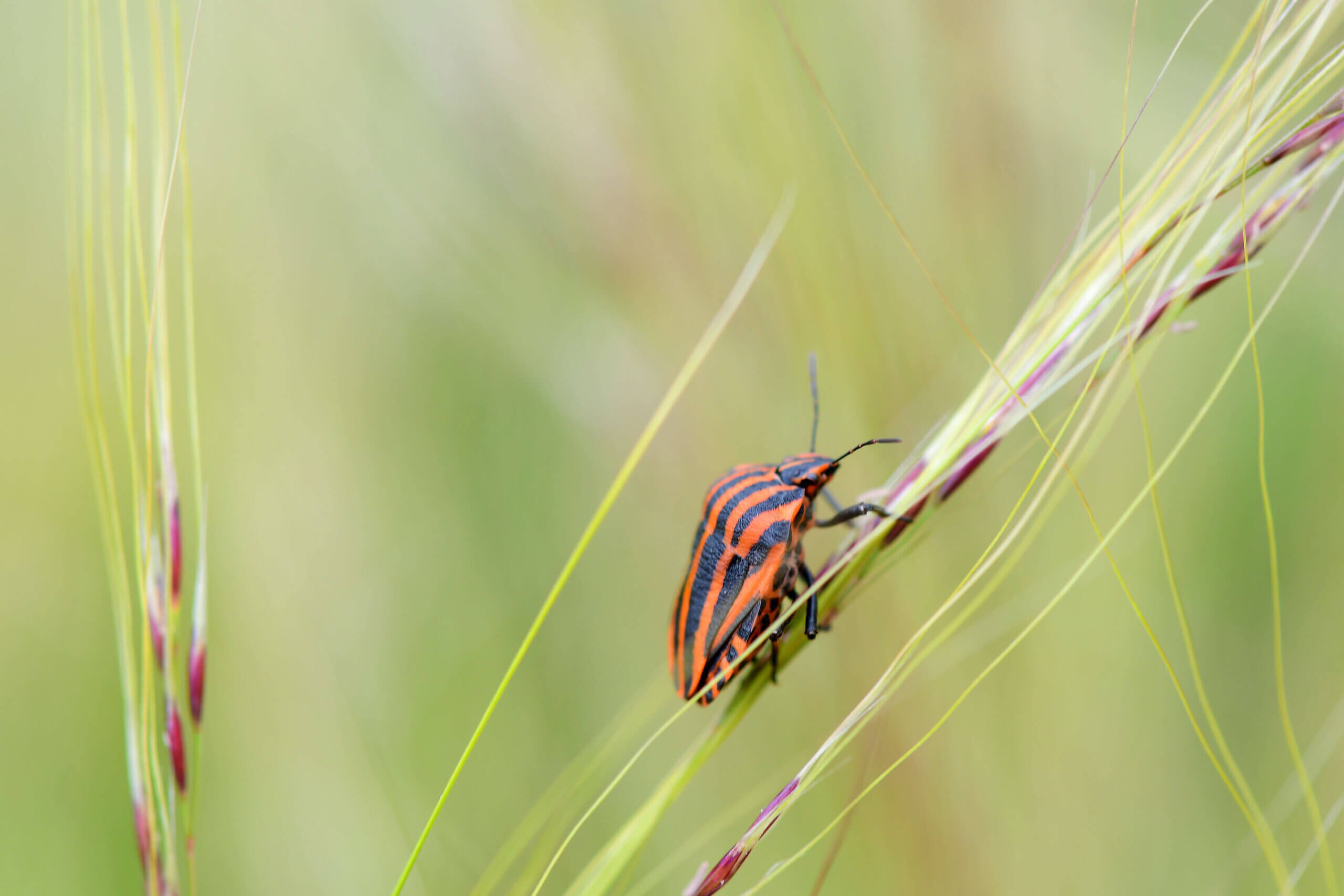
How to Combat Chinch Bugs in St. Augustine Grass
Chinch bugs are the bane of lawn-owners in Florida and throughout the southeast. These insects may be tiny, but they can do huge damage to your St. Augustine grass. They are fond of Zoysia grasses as well. Because of their small stature, it can often be difficult to see them in the soil under your lawn, making it even more important that you proactively treat your lawn to prevent chinch bugs. Here’s what you need to know to keep your lawn safe.
Identifying Chinch Bug Infestations
You’ll likely need a magnifying glass to see any chinch bugs themselves but fortunately, there is another major sign of a chinch bug infestation that is much easier to spot. Keep an eye out for any dry, yellow patches in your lawn. Particularly check along the edges of your driveway, sidewalk or any other paths. These areas provide easy access for chinch bugs so you’ll often see infestations begin developing in these areas.
The dry patches left by chinch bugs often resemble those seen in drought conditions, so be sure to verify that your lawn is getting enough water before jumping to the conclusion that you have chinch bugs. If your lawn does not spring back to health with a bit of extra watering, then you can investigate the soil for signs of chinch bugs. Check around the edges of the dry patches for dead chinch bugs, which turn yellowish in color.
Getting Rid of the Chinch Bug Infestation
Once you have determined that you have a chinch bug problem, the next step is to get rid of the bugs. Insecticide is a common solution to chinch bug and other lawn pest problems. It will kill any chinch bugs quickly. It is important to note though, insecticide is not permanent. You may need to go through several applications to fully get rid of any chinch bugs in your St. Augustine lawn. Be sure to follow the package instructions carefully to get the best results from your chosen insecticide. You can also hire a pest control specialist to handle the task for you.
Keeping Your Lawn Chinch Bug-Free
Now that you have tackled the problem at hand, you’ll want to stop it from coming back. Proper lawn care will go a long way towards keeping your St. Augustine grass healthy and safe from chinch bugs.
Give Your Lawn Extra Water
Chinch bugs thrive in hot, dry environments, so your lawn will likely benefit from a bit of extra water during especially hot periods. Not only will this help to keep the chinch bugs away, but it will also keep your lawn lush and green. When giving extra water, be sure to abide by any lawn watering restrictions in your area.
Mow Frequently
Your lawn will be at its healthiest if you mow it about once a week. Aim to trim about 35 to 40 percent of the blades’ length at each mowing. If possible, use a mower that chops the clippings into a fine mulch so the soil can break it down more easily. Chinch bugs often hide under clippings left in the lawn known as thatch, so keeping your lawn tidy will help prevent this.
Remove Any Thatch
Even with a high-quality mower, thatch can still form over time. Take a fine rake over your lawn periodically to remove any thatch around the base of your grass. When chinch bugs go into hibernation during the winter, they’ll have difficulty finding a suitable home if your lawn is free of thatch.
Repair Chinch Bug Damage with Fresh Sod
If chinch bugs have done significant damage to your lawn, watering may not be enough to restore it. Adding new sod can fill in any dead, patchy areas to bring your lawn back to looking its best. At Duda Sod, we have a vast range of sod types for sale in Florida, including St. Augustine, Floratam, Zoysia, Bahia and more. We’ll be more than happy to help you find the perfect sod to meet your needs. Get in touch with us today to learn more about our various sod types and select the best one for your lawn.